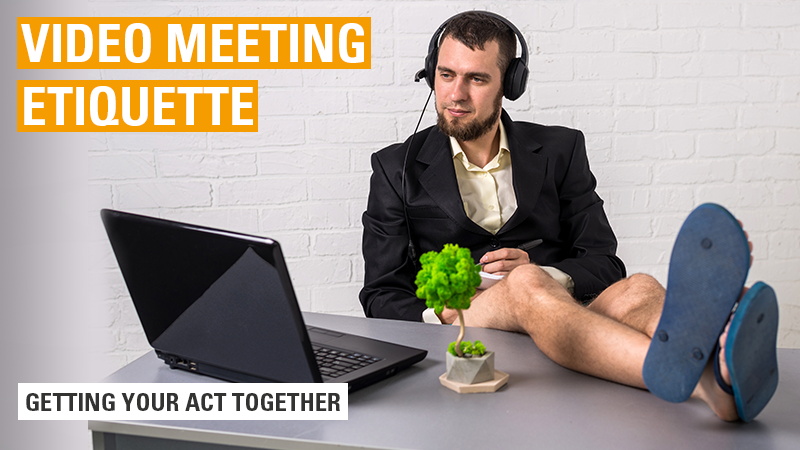Video conferences challenge us in a different way and even more so than a normal phone call. After all, most of us aren’t professional TV stars. However, we should all have a quick check in front of the camera before the video meeting kicks off. That means taking a minute to check that your hair is presentable and that your top is on straight. And the same goes for the ladies! We’ve compiled a few tips below on how to successfully take part in video calls.
Appearance
First of all: Dress sensibly. Although (hopefully) nobody’s going to see whether you’re wearing a proper pair of pants or your pajamas, you will feel more professional if you’re wearing the former. And that impacts the impression you make on the other participants. The same applies for your screen background. You might want to replace your “Bikes and Girls 2020“ calendar – at least temporarily – with a more intellectual-looking Kandinsky poster. And just as important – the room should be sufficiently bright. A dark silhouette with backlighting can appear creepy.
Well prepared
Good preparation includes both the technical check and content planning. It’s best to test the display detail and camera settings before the meeting starts. The camera should be set at the eye level of the person in front of it – not above or below – and the microphone switched on.
Having the content well prepared shows respect for the participants‘ time – regardless of whether you’re talking to customers or colleagues or even sitting in a job interview. The meeting will of course develop differently depending on the target group but care should be taken to let the participants speak one after another and not simultaneously. It helps enormously if comments are structured and orderly.
Everything that makes a noise or could disturb the meeting – children bursting in, a beeping telephone – should be taken care of beforehand. Slurping noises are disturbing and can be made even more unappetizing by the microphone. So be careful when you drink coffee during the meeting. It’s also better not to blow your nose directly into the camera. For formal meetings, it’s more sensible to lock animals out of the room – although a cat taking a walk in front of the camera can help to make a less formal conversation more relaxed.
Make participants aware that they need to be involved
Participants should be active and contribute to the meeting – not have the feeling that they’re sitting in front of the TV and watching a talk show. This means that the moderator should ensure that the members are actively involved in the conference. Whether each person briefly reports on their current situation or whether the team is split up into groups to solve small tasks – these challenges keep the participants alert and awake.
Tone of voice and emotions
When speaking, your tone of voice should be appropriate and respectful. It’s important to avoid emotional or controversial conversations in front of the camera, and to sort these out in a personal discussion.
Body language
In a video call, the importance of body language is very apparent. It’s never really possible to look your partner in the eye and sometimes you don’t actually know who’s talking to whom. This makes active listening all the more important. Nodding positively when others speak gives the other person the feeling that they’re being taken seriously. But if a colleague says something that you don’t agree with, don’t shake your head or roll your eyes. We’re all “sitting in the same screen“.
